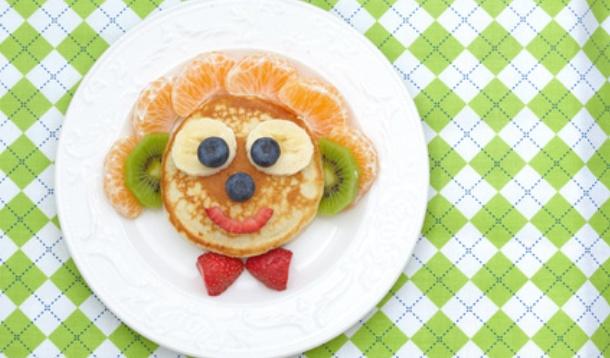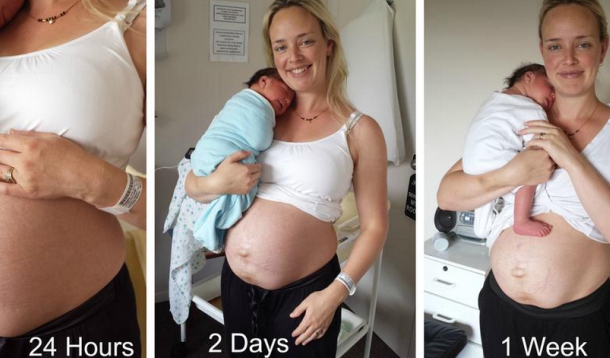
All it takes to get us in a tizzy these days is a mom in a bikini or a photo of a cutesy lunch. In this case, the offending Instagram image was of fish and chips rendered in lattice served up with peas in a pineapple cupcake holder.
I have done the same thing to my kid's meals exactly never. In the past, I may have sneered or ridiculed parents who make masterpieces out of their kids' Goldfish crackers. After all, I am no Michelin star mom. I don't "do" presentation. It's a kids' lunch for crying out loud. The last thing I want is to set a precedent that I can't live up to. My son must learn to appreciate his peas sans embellishment.
But - and this is the important piece - I finally get why those moms (and maybe a sprinkle of dads, too) go to all that bother. Not because they expect the Lunch Maker of the Year award. And hopefully not because they're deluded enough to think it means they love their kids any more than the rest of us do.
No, they do it because they like it. It's their thing, if you will, their creative outlet...
The effort this writer puts in when one of her kids needs a costume is, she claims, borderline psychotic. "That’s my peas in a pineapple cup situation. My children look like they are part of a full scale Broadway production."
For others, it may be crocheting intricate sweaters or baking 10-tier birthday cakes. Whatevs. The point is, we all have our gifts and interests.
For instance, I deliberately don't bake my son's cake, and he's luckier for it. I play to my strengths. Instead, every year I make a huge hand-drawn and painted birthday banner, of whatever character he happens to be into. My version of a time capsule. I'm sure to some parents who've seen my posters I'm a barking mad overachiever (though of course they are far too nice to say so to my face!)
So though I would never deign to make a lattice out of my son's fries, I won't have a pop at any mom who does - certainly not this mom from Melbourne. The crazy creative stuff she does with her son Jacob's snacks makes me wish she designed my evening snacks. A Don Draper crackers and cheese plate, anyone?

We claim we want to raise strong girls, but what if we're reinforcing the very gender biases that hold them back?
According to new research cited in the Washington Post, not only did 23 percent of girls and 40 percent of boys admit they liked their political leaders to be males, they felt similarly about business leaders.
And more women than men said they preferred a male boss.
Those biases run deep, and they start early. When it comes to school, students - and the mothers of those students - were least likely overall to support a council run by "white girls."
So what does this say about us? We want female leaders in theory, but maybe not in practice. If we want to change things for our daughters and their daughters, we need to rethink our own thinking...
Here is a summary of the Post's five tips for checking unconscious biases before they get passed on to the next generation:
1. Watch your tongue
"Think about what conclusions you jump to about what boys or girls should dress like, act like, think about and feel." This is where your natural biases reside. Counter stereotypes with images of women and men doing jobs other than traditional, gender roles.
Be mindful of automatically referring to girls as "pretty" and boys "strong." Use gender neutral language, such as "mail carrier" instead of "mailman." Generalizations that start with "all boys" and "all girls" are red flags for bias.
2. Free your kids of gender roles
Don't base chores on gender stereotypes. Where possible, encourage mixed gender friendships and play. Provide both boys and girls a wide assortment of toys, TV shows, activities, etc, that don't conform to what's necessarily expected of a particular gender.
I admit I've had to bite my tongue more than once when my son watches his new favourite show - about a troupe of wand-waving sparkly fairies. It's Girly with a capital G, yet he seems to really enjoy it so I don't want to ruin it for him.
3. Call out gender bias when and where you see it
Start the discussion early when you see or hear examples of stereotyping, and suggest ways for both boys and girls to address bias when they encounter it in their own lives. For example, “That commercial shows girls not caring about school as much as about how they look. That doesn’t seem fair.”
4. Nix “boys will be boys" from your lexicon
Too often boys are let off the hook instead of held accountable for "demeaning stereotypes and remarks about girls." If you don't condone it, correct it immediately and don't let them pass it off as a joke.
Teach boys to respect and value girls and women, and to experience their own vulnerability and emotional expression.
5. Foster leadership opportunities
The best way to learn to be a leader is to be a leader. Encourage opportunities for leadership and public speaking in the community, so girls can gain skills and confidence without fear of being bossy or worrying about what their friends will think. Set up mentorship occasions that tie in with personal passions, and highlight examples of women leaders in the media, i.e. the lead scientist in the recent Pluto mission.
Spill it: How do you tackle gender bias in your home?

![]() RELATED: Postpartum Depression Lasts Longer Than You Think
RELATED: Postpartum Depression Lasts Longer Than You Think